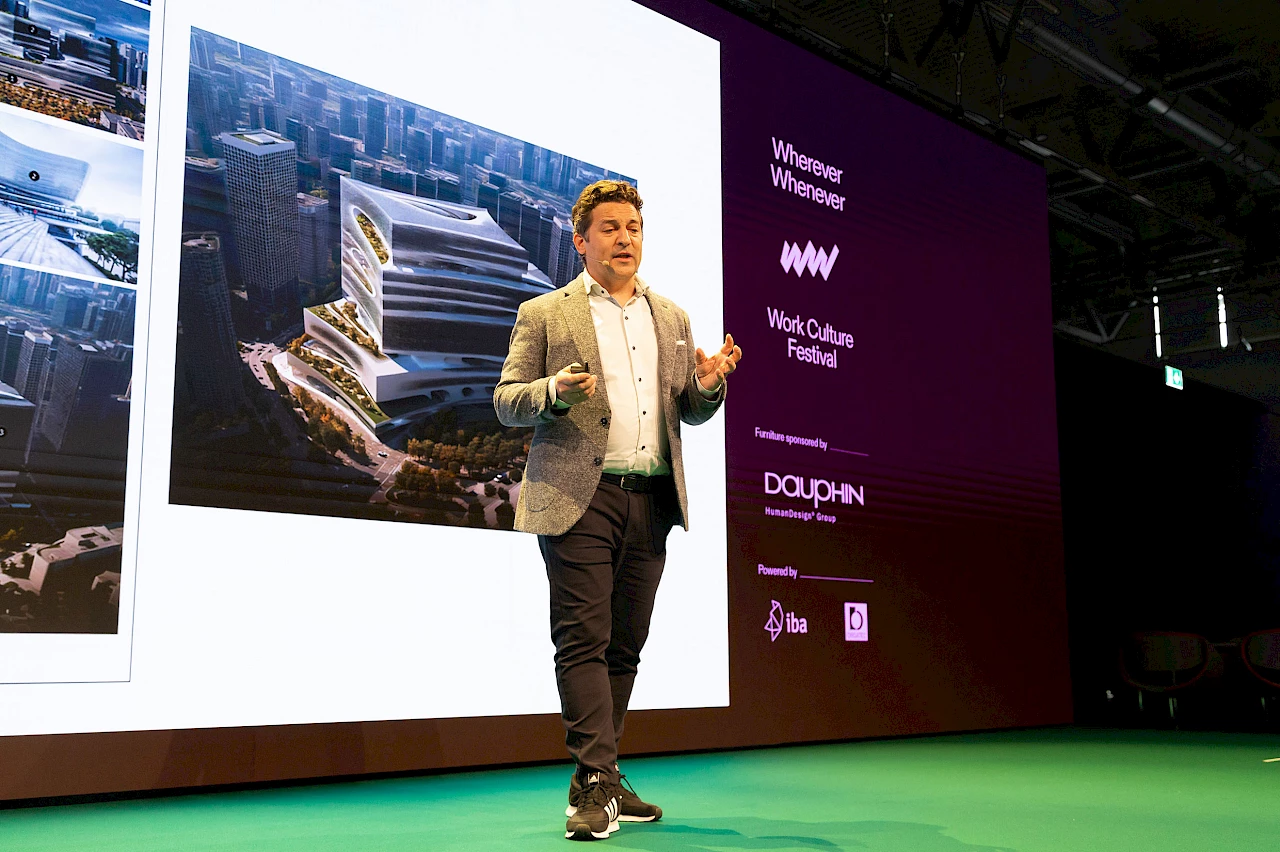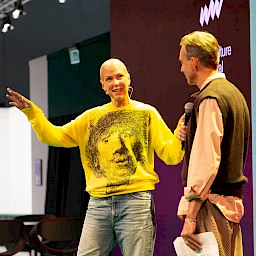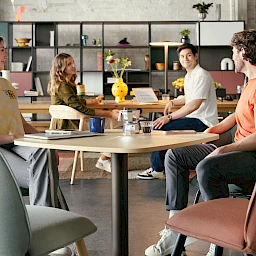“AI turns data into power.” With this statement, Uli Blum opened his presentation at the Work Culture Festival and gave the audience an insight into the future of workplace design. As co-head of the Analytics and Insights department at Zaha Hadid Architects and professor at the Münster School of Architecture, Blum works at the intersection of architecture, technology, and human behaviour. He envisions working environments that are not static, but evolve through the intelligent use of data and AI.
Data is the new oil – AI is the refinery
To illustrate his vision, Blum used a metaphor that ran like a thread through his entire keynote speech: “Data is the new oil. But oil is initially worthless unless it’s refined. AI is now taking on this role, acting as a refinery that transforms raw data into usable insights. Instead of just collecting mountains of data, companies can use AI to optimise structures, processes and, most importantly, spaces. Blum made it clear that data alone does not create added value. Only through intelligent analysis, linking and interpretation can concrete courses of action be developed. It is not enough to know how many people are in an office at any given time or when a room is occupied. Only when we understand how people move, where they feel comfortable and where points of friction arise can we design work environments that are productive and inspiring. In this context, Blum made it clear that AI acts as a “crucial interface between data and design”. Whereas the focus used to be on gut instincts and aesthetic decisions, today it is possible to make well-founded predictions. Which workstations are used most frequently? How do light, temperature, and acoustics affect satisfaction? Which spatial configurations promote creativity and teamwork? “True power lies not in collecting, but in understanding,” Blum emphasised. “AI is the tool that allows us to gain insights in a fraction of a second that would have taken us weeks in the past.”
AI as a catalyst for innovation and a problem solver
Blum explained two key dimensions of AI use: AI as a catalyst for innovation and a problem solver. As a creative tool, generative AI supports form finding in architecture. Zaha Hadid Architects, for example, uses it to develop new building and spatial concepts from sketches and ideas. “We let the machine dream, so to speak, to see perspectives that we might never have found on our own,” explained Blum. This results in hundreds of variations of facades or floor plans, from which architects can further develop the best approaches. However, AI is not only a source of inspiration, but also a highly precise analysis tool. As a problem solver, it is used to optimise room structures on the basis of data, be it through calculations of lighting conditions, sightlines, or workstation utilisation. In this context, Blum spoke of evidence-based design, an approach that supplements gut feeling with measurable facts.
The self-learning, self-evolving office
A key theme in Blum’s presentation was the concept of the self-learning, self-evolving office — an office that constantly evolves, optimising itself by means of sensors, data analysis and user feedback. “We have seen more change in the last 25 months than in the previous 25 years,” Blum explained. The transition to flexible and hybrid working has brought many freedoms, but it has also meant that teams spend less time together in the office. Autonomy is important, but it can weaken cooperation if everyone simply seeks out their favourite spot. This is precisely where AI comes into play: Motion and interaction analyses can be used to identify patterns, such as which workstations are particularly popular, which areas are rarely used, or how closely team members are connected to each other. “The office is no longer a static space, but a living network of places shaped by people,” says Blum. Clear trends are emerging: People seeking inspiration tend to choose communicative zones, while others prefer quiet areas for concentrated work. “Our goal is to understand these dynamics and design the office in such a way that it supports all working methods in the best possible way.” Blum therefore increasingly sees the office as a laboratory where ongoing tests are conducted to determine which spatial concepts work. Data is evaluated, feedback is integrated and the design is adjusted step by step. This continuous learning process creates working environments that are constantly being improved.
Student visions — the office of the future
In his presentation, Blum particularly pointed to the projects of his students at the Münster School of Architecture, which looked far into the future of working environments. An example of this is a master’s thesis that addresses the concept of the self-evolving office: Instead of rigid floor plans and fixed furnishings, dynamic systems are created that continuously adapt. For example, one student developed the vision that robots would automatically rearrange furniture overnight based on the requirements of the coming workday. User feedback is used to continuously improve the working environment. “These approaches show how we need to think about the next generation of offices: flexible, learning and adaptable,” says Blum. One of these visionary concepts is self-learning furniture, which is furniture that can be arranged in a modular, flexible and intelligent way to support different working modes — from meeting pods and flexible seating areas to variable work tables. Algorithms can be used to configure these elements in such a way that they promote teamwork while also offering opportunities for retreat.
Developments in the field of artificial intelligence show that it is no longer enough to simply accept change. It has to be actively shaped. The work environments of the future must be flexible, adaptable and tailored to people’s needs. AI offers tremendous opportunities to continuously improve structures, processes and spaces. However, it is crucial to use these technologies responsibly and always put people first. Ultimately, it is up to us to harness the potential of AI not only for efficient, but above all for humane and inspiring working environments.






